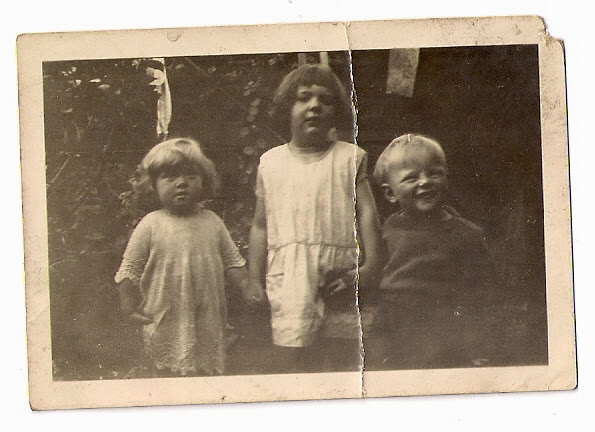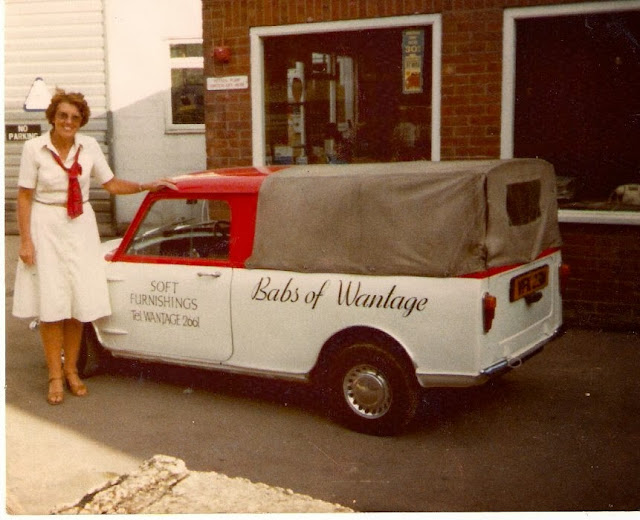So often I catch myself thinking
About special times spent with you,
Laughter and fun shared,
Secrets told,
And promises kept.
Babs loved Bill to bits. He rescued her from very dark days after she divorced Syd Reeves.
She'd always wanted her own business - Bill helped her start the shop and make it work. He did all of the cooking, most of the housework, kept the shop books, and installed curtain track for customers.
She'd always wanted her own house. Together the bought and built and furnished and decorated a new home. They called it WilWyn. It was home for the couple for 25 years, till Bill passed away in 1997. It was home for Babs, full of memories of Bill for another 14 years. Number 4 Garston Close was their haven into which they welcomed everybody. Bill made that possible.
She liked to travel. Bill took her all over the world to exotic places. For a while they kept a caravan at Llafranc in northern Spain and invited family and close friends to enjoy it with them. For another while their favourite destination was a hotel in the Dordogne, southern France. They went on cruises. We have pictures of the couple in their finery, dining at the Captains Table. They visited the Far East, India, Hong Kong, China, New Zealand, USA, Caribbean, Nordic countries. They had a ball, and Bill made it all possible.
Babs loved Bill to bits.
When Bill's health was decimated by stroke Babs cared for him. She was nurse and coach and carer and cook. Nothing was too much for Bill.
Bill didn't have much time for religion. When the time came he wanted no part of churches or graveyards. He wanted to stay forever atop the Berkshire Downs looking north to Wantage and beyond. This place was on the Locking Estate, Babs home in her earlier years. It belonged to her as much as the descendants of Lord Wantage. Babs had no problem with the gates to the private road.
That's where Bill's ashes were scattered. She figured if it was good enough for Lord Wantage, it would also be suitable for Bill. This is a spot where nobody would ever walk. Out of the way and peaceful, but powerful because of the view.
When the time came, Babs wanted to be with Bill. I was left in no doubt. Her will specified where her ashes should be scattered, and many times she reiterated that to me in conversation.
Unfortunately the decision about where Babs ashes would be laid to rest turned out to be contentious. Understandable family wishes were confirmed by her priest. Babs was conflicted it seems. On the one hand she wanted to rest with Bill on the Downs. On the other she felt a responsibility to be with her family, in Ardington. That's what her priest told us, and I'm sure he was right.
We decided to lay her to rest in Ardington. We couldn't identify the precise spot where Bill was placed. Her priest explained her conflict, and her family had strong views. In the end it came down to conscience, and it was mine that ended up with the problem.
Only a few days later we discovered a neighbour and close friend knew exactly where Babs put Bill to rest. Unfortunately too late. So we decided to do the next best thing - have a commemoration on the spot leaving something of Babs in the same place. Her ashes might not be there, but at least some of her spirit would.
The B4494 goes from Wantage to Newbury - up Chain Hill, past the Foundry, and up to the Ridgeway and the monument to Lord Wantage This used to be a Sunday afternoon drive when we were kids, maybe for a picnic if the weather was good. Lord Wantage's family chose this particular spot for his monument. It's special up here sitting on top of the Downs with a clear view.
The Ridgeway is famous in these parts, and further afield to some. This was built by the Romans, all the way from London to Bath. Where it crosses the B4494 there's a small car park, from where it's just a few hundred yards walk to the Monument. From the same car park there's a private road going down to Ginge, and Lockinge, and Ardington. There's a locked gate to keep strangers out, but from the Ridgeway its easy to cross the ditch on foot into the triangle of land between the road and the Ridgeway. Sixty or so yards from the gate and in the middle of the triangle is where Babs scattered Bill's ashes and where we paid our tribute to Babs, and to Bill for the happy couple they were.
We burned the pictures you see in the gallery, and scattered the ashes. We buried the small plate you see here. Of all Babs possessions we came across, this plate was the most poignant. They'd obviously bought it in Grenanda and cherished it ever since.
The words on the plate explain what it meant to them, and to us when deciding what to leave there. And that's why they're quoted at the top of the page.
Of course it's only symbolic. So would the ashes have been.
Of course its sentimental. So what's so wrong about that?
Are Babs and Bill together again. We like to think so.
And in the end, that's what counts.
Steven Reeves














































